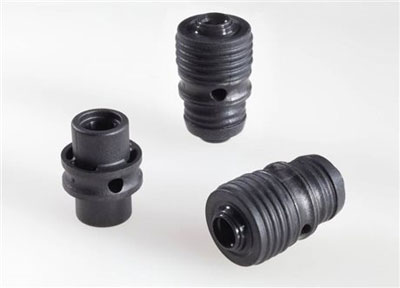| MAIN |
Polyphthalamide VESTAMID® HTplus and HNBR component for automotive cooling circuit manufactured with plastic-rubber technology| Subj: Press-releses  Cooling circuit parts installed by renowned automotive manufacturers consist of a direct composite comprising the special polyphthalamide (PPA) VESTAMID® HTplus R1033 by Resource Efficiency Segment of Evonik, Essen, and a newly developed HNBR elastomer by KACO GmbH & Co. KG, Heilbronn. The composite is generated with the patented plastic-rubber technology. Cooling circuit parts installed by renowned automotive manufacturers consist of a direct composite comprising the special polyphthalamide (PPA) VESTAMID® HTplus R1033 by Resource Efficiency Segment of Evonik, Essen, and a newly developed HNBR elastomer by KACO GmbH & Co. KG, Heilbronn. The composite is generated with the patented plastic-rubber technology.This technology enables the firm bond of a component's plastic and rubber parts without pretreatment. Moreover, the process does not require the application of an adhesion promoter. The plastic material, such as VESTAMID® HTplus R1033, must be specifically formulated for this purpose. The newly developed HNBR elastomer by KACO shows outstanding initial adhesion. "We decided in favor of this production process because the direct composites prevent modifications in the component's interior, which may result from applying a bonding agent. Given the low tolerance ranges we work with, that would be unacceptable," says Marcus Teller, product developer of sealant parts at KACO, about the use of VESTAMID® HTplus R1033. Conversely, this implies that the plastic part cannot change its dimensions when exposed to various cooling media – the glycol-water mixtures used by different automotive manufacturers. The bond with HNBR also must remain stable when the part is in contact with various media or subjected to temperature extremes. "This is ensured by the high chemical resistance of PPA as well as the special properties of VESTAMID® HTplus R1033 for composite bonding," says Frank Lorenz, who is responsible for automotive product applications at Evonik. The plastic part remains dimensionally stable even in the elastomer vulcanization process, which allows for trouble-free component function for a million transmission cycles depending on the transvers path. Source: Evonik Industries AG Previous news |
© 2002—2025 PLASTINFO